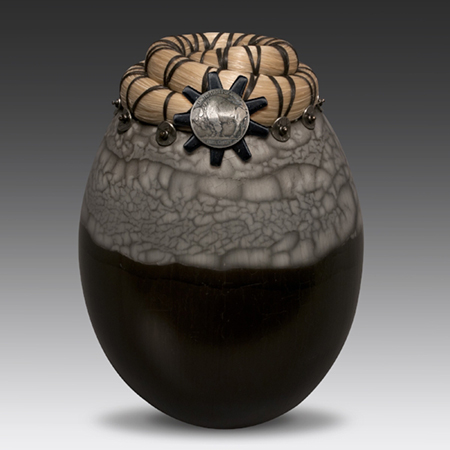The Hands Bring the Indigenous & Modern Worlds Together by Valerie Seaberg
During our interview, Valerie shared her unique life story. The uniqueness of her life, along with her inquisitive mind and crafty hands, make her who she is today. This also explains why she has been admitted to present her artwork at the renowned 2018 Smithsonian Craft Show.
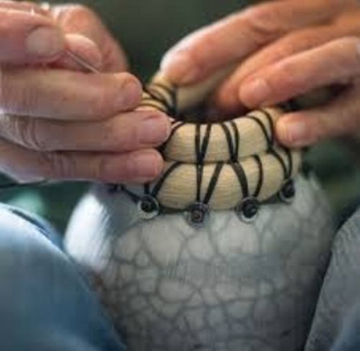
Ms. Seaberg writes. ″I am inspired by the knowledge that I practice ancient artistry, creating objects at once functional and sacred. Intact indigenous cultures all over the world still weave and fire their work as I do….″
Valerie spent her early years leading mountaineering trips for Outward Bound. Spending many months of the year traveling in some of America′s most beautiful and wild landscapes gave her a chance to appreciate, understand, and explore nature at her own pace. Surrounded by mountains, plants, rivers, oceans, and animals this nourishing landscape became ingrained in her heart and soul and has inspired her to produce amazing pieces of art with exquisite craftsmanship and organic design.
As an adult living remotely in Northern California, she learned how to weave baskets from the grasses growing around her home. According to Valerie, the Gullah people in South Carolina brought this technique from their far away home in Africa but replaced the materials with native grasses once they settled on the coastal regions of America. During the civil war, because the trade routes from the north were cut off, white women in the south applied the same technique, using native pine needles, to weave hats for the soldiers to wear for protection from the sun.
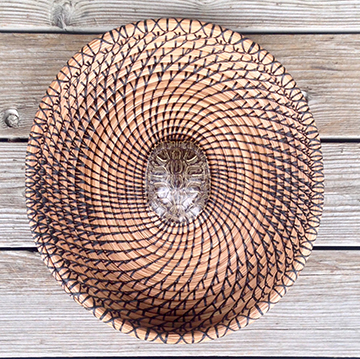
After years of weaving traditional grass and pine needle baskets, Valerie decided to try something new. Something that would keep with tradition while adding something else. She looked again to nature and started incorporating shells, stones and turtle shells to her work. This was a small step away from the tradition but well received by contemporary art collectors.
At the same time, she was also drawn to pottery making, especially techniques used by the southwestern American Indians. She explained that to make black pottery, the work has to be buried in a pit, covered with sawdust, and lit on fire. After one to two days the carbon is ″drawn into the clay″.
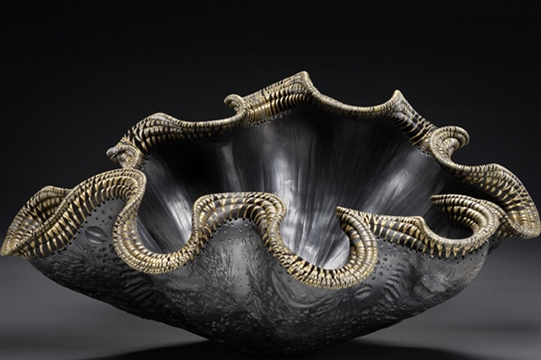
Sculpting the clay is her favorite part of pottery making. She describes crafting the clay and in turn being crafted by it. Her hands follow what naturally arises from the clay itself. This non-verbal sensory experience is both the most natural and organic. Creating work that flow like ocean waves has been a calling for her, no straight lines, no edges, just curves.
To add an extra touch, she tried to combine her other craft, basket weaving, with pottery. First, she tried to use the familiar straw grasses but they were too stiff and short to be added on to the curvy tops of her ceramic work. Then she recalled finding horsehair at a Mountain Man Rendezvous in Wyoming. She started to weave with horsehair (as a substitute for grass) which allowed Valerie to create highly curved mixed media work. Among all the varieties of horsehair, she prefers the strong, sensuous tail hair of nomadic horses imported from Mongolia.
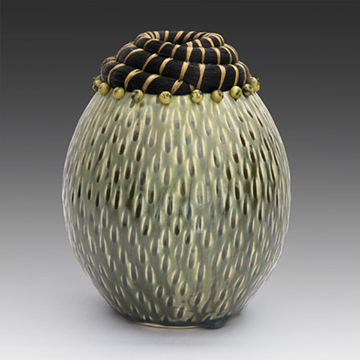
For Valerie, it has taken trial and error to develop her unique style. Sometimes, the best art piece comes from a failed initial attempt. She gave an example of how she came to use gold leaf. After laborious work in drilling the holes on one of her large sculpted waves, she cracked the last hole. Frustrated, she put the piece away without touching it for almost a year. Then inspiration came — she repaired the crack by applying gold leaf over it. Since then gold leaf has become one of her favorite finishing techniques.
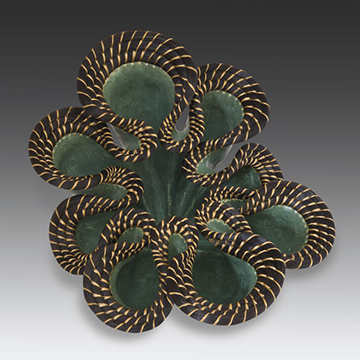
Valerie believes the best way for her to make an art piece is to approach the work with curiosity and to fully engage with the materials. ″As an artist, it is important for me to remember that there are no mistakes in art; learning from failure is part of being a good artist. Some of my most inventive work arose from trying to repair a ′mistake′ or solve some technical problems.″
Valerie considers creativity and art are abilities that can be cultivated through practice. ″I encourage anyone interested in creative life to believe in yourself and to invest in the time and effort it takes to develop your artistry and craft.″
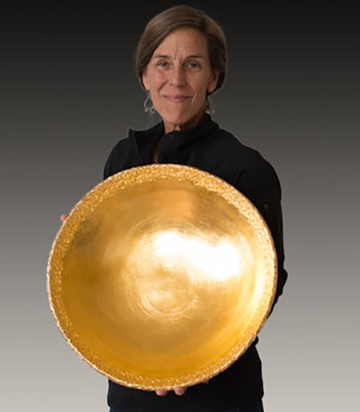
Valerie′s Website
